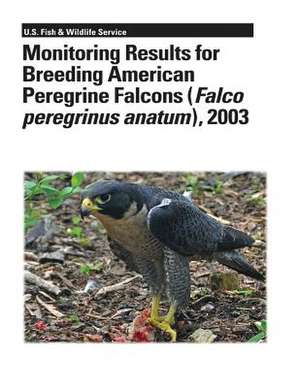Monitoring Results for Breeding American Peregrine Falcons (Falco Peregrinus Anatum), 2003
Autor Michael Green, Ted Swem, Marie Morinen Limba Engleză Paperback
Preț: 87.68 lei
Nou
Puncte Express: 132
Preț estimativ în valută:
16.78€ • 17.50$ • 13.95£
16.78€ • 17.50$ • 13.95£
Carte disponibilă
Livrare economică 28 februarie-14 martie
Preluare comenzi: 021 569.72.76
Specificații
ISBN-13: 9781479141104
ISBN-10: 1479141100
Pagini: 34
Dimensiuni: 216 x 280 x 2 mm
Greutate: 0.1 kg
Editura: CREATESPACE
ISBN-10: 1479141100
Pagini: 34
Dimensiuni: 216 x 280 x 2 mm
Greutate: 0.1 kg
Editura: CREATESPACE
